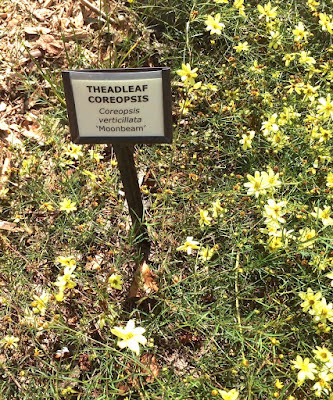
|
|
California poppies are easy to grow, and the seeds are easy to
find. There are many other great flowers to sow for
pollinators, too. (Photos: Kathy Morrison)
|
Plan for native pollinators with native flowering plants, if possible
Welcome to spring! The sunshine has returned after that nice soaking the past several days. Since most of us are at home for the time being, we can get outside and work in the garden. Maybe even sow some flower seeds to bring in the pollinators.
May I make a suggestion? Stick to named varieties. Don't buy or sow seed mixes without knowing what's in them. The package photos look so cheerful, but what's on the front may not be what's inside. "Packet illustration is a guide only to the contents," to quote one package. At the very least, you could waste your money on seeds that don't sprout. At the worst, you unknowingly may plant something that's invasive in California.
One national seed company sells a variety of "wildflower" collections in its online shop, from "Fragrant Mix" to "Meadow Mix" to "Pollinator Mix," and I was shocked to discover that not one listing notes what's inside the package. They're aimed at a general audience, for "any sunny garden location in the United States and Southern Canada." Really? That's dozens if not hundreds of microclimates. Quite a crapshoot.
Here's the deal, especially if you're hoping to attract bees, birds and butterflies to your garden: Native pollinators need native plants for their young to thrive. And even if you just want to offer nectar plants for adult pollinators, wouldn't you prefer knowing what those plants are? After all, if they do well, you can plant them next year, too.
When in a nursery or shopping online, look for mixes chosen for California, native seed mixes or individual packets of some of these flowers:
-- California bluebells (
Phacelia campanularia
). Adorable blue flowers are great in rock gardens.
-- California poppy (
Eschscholzia californica).
Our state plant is easy to grow and reseeds readily. Like most wildflowers, its best bloom is typically through May.
-- California gilia (
Gilia achillefolia
). A native member of the phlox family, it's popular in bee gardens.

|
|
This 'Moonbeam' threadleaf coreopsis, growing at the
Fair Oaks Horticulture
Center, is a cultivar best grown
from transplants, but many other coreopsis easily can
be grown from seed.
|
-- Coreopsis, many varieties. Often called tickseed, these easy-to-grow flowers --- both natives and cultivars -- attract pollinators.
-- Lacy phacelia (
Phacelia tanacetifolia
). Butterflies as well as bees and hover flies love this native member of the borage family with lavender flowers.
-- Lupine. California has 138 native varieties of lupine. If you can find seeds for
Lupinus bicolor
, that's the blue and white lupine that often grows wild with California poppies; those two together gave us our state colors. But there are many others that grow well in the Sacramento region.
-- Purple Chinese houses (
Collinsia heterophylla
). This is a pretty native that grows well under oak trees.
-- Salvia. Another species with many California natives, these are wildly popular with hummingbirds and bees. Easiest to find (especially in transplants) are hummingbird sage (
Salvia spathacea
) and Cleveland sage (
Salvia clevelandii
).
-- Tidy tips (
Layia platyglossa).
This
cute yellow daisylike California native grows well in coastal and valley areas of the state.
-- Western yarrow (
Achillea millefolium californica
). The small white-flowered perennial grows just about anywhere and is popular with butterflies. Look for it as a transplant.
I've found good selections of native seeds at Peaceful Valley (
groworganic.com
), Renee's Seeds (
reneesgarden.com
) and Botanical Interests (
botanicalinterests.com
).
Baker Creek Seeds
also carries some California natives, mostly poppies, but apparently has been overwhelmed with orders since the coronavirus closures began. The website is temporarily shutting today until March 23 so the skeleton staff can catch up on orders.


